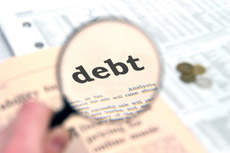Debt Management as a Way of Overcoming Financial Hardship
Debt management is a way to pay off multiple loans through saving, cutting down on spending, and other strategies. Many people have auto, personal loans and mortgages to repay. Some of them have poor spending habits and end up with excessive debt to repay. While opening a savings account is a good choice for some people, others are forced to declare bankruptcy.
Why People Have Financial Problems
Some people save money for the down payment, take out a mortgage, and then lose their job and face a long period of unemployment. Others get divorced, suffer from serious illness, or spend beyond their means. Many students apply for student loans, which take years to pay off. Others apply for an auto loan because this is the only way they can go to work, drive their children to school, or go grocery shopping. The problem is that multiple loans can ruin your credit score and limit your options for financing when you face an emergency.

Overcoming One’s Financial Problems
There are different ways to keep debt down, including consolidation, negotiation, and counseling. The first step is to look at your income and expenses. Look at your loans and sort them by priority. There are priority loans such as electricity and water bills, council tax, and rent. Secured loans such as mortgages are also considered priority. In general, these are bills for which financial institutions can file a lawsuit or borrowers risk losing the asset pledged as collateral. Other loans are non priority, including personal, catalogue and credit card debt, and unsecured car loans. Financial institutions can still threaten with legal action, but borrowers take less risk. So, look at your loans and if most of them are considered priority debt, it may be a good idea to seek professional advice and help. If you have non priority debts, there is a good chance that you will manage on your own. The next step is to look at your sources of income, including wages, salaried income, and child support. There are other sources of income, some of which taxable and others non taxable. These include investment and rental income, disability benefits, worker’s compensation, and nontaxable gifts. If your combined income is insufficient to meet your living expenses and make payments, it is a good idea to contact your lenders and explain your financial situation in detail. The next step is to negotiate with your creditors.
Debt Negotiation as a Way to Pay Less
You can settle for less than the amount owed. Borrowers can choose to negotiate on their own or use the services of a third party. In most cases, debtors pay between 35 and 70 percent of the loan amount. Negotiation or settlement makes sense in some cases, for example, when borrowers face bankruptcy or legal action. The problem is that some companies advise debtors to stop making payments. There are many downsides and risks, including fraud, high costs, taxes, and credit score damage. Lack of government regulation is another problem. Finally, borrowers who default on their payments often face wage garnishments and lawsuits.
Consolidation and Types of Loans
Another option for borrowers with multiple and excessive debts is to consolidate them into a single loan. This makes repayment more convenient. In addition, borrowers are often offered a low interest rate, which reduces the monthly payment amount. Consolidation is usually a good choice for unsecured loans such as credit cards and personal advance. You cannot consolidate mortgage and other secured loans. The good news is that there are different ways to go about consolidation. Options to consider include taking out a personal loan, applying for a home equity, and transferring high-interest credit card balances. The right solution depends on the types, amounts owed, interest rate, repayment schedule, income, and other factors. Taking out a home equity loan is one option and in this case, the borrower’s home serves as collateral. This is a solution for borrowers with a very good or excellent credit score who also have a good amount of equity. The main benefit for borrowers is the lower interest rate. The interest rate is low because they are less risky for financial institutions. Taking out a personal loan is another option to consider. In this case, it is an unsecured credit, and the interest rate will be higher. Borrowers with an excellent credit have a higher chance of getting approved. Finally, credit card balance transfers are designed for borrowers with multiple credit card debts. They benefit from low promotional interest rates, and some issuers feature benefits such as no annual fee and perks like air miles. The only problem with balance transfers is that putting a large amount of debt on a single card may affect your score.
Related Articles
Debt Ratio as a Measure of Financial Health
Debt ratio is an indicator of the amount of debt of a company, compared to its assets. It shows to investors, financial institutions, and other parties whether a business has loans and how much. A high ratio indicates that the company is a risky borrower while a low ratio shows that the business...
Debt Consolidation for High-Interest Credit Cards and Loans
Debt consolidation is a process that allows borrowers to combine multiple loans. It is designed for people with serious financial problems who are unable to make their monthly payments. Options to Choose FromBorrowers can choose from three options depending on their circumstances – a balance...
Debt Settlement as a Strategy to Avoid Bankruptcy
Debt settlement is a debt reduction solution that is designed to allow borrowers to pay off their loans faster. Known as credit settlement and debt arbitration, this approach helps people to reduce the total amount of their debt. It is a good solution for borrowers who are overwhelmed by excessive...
